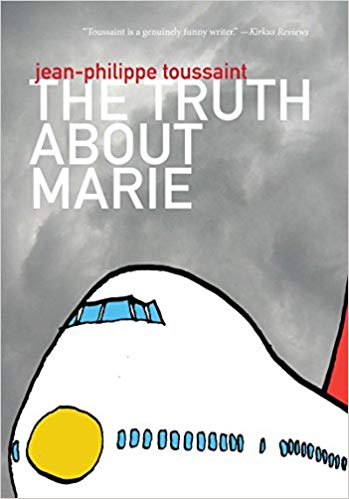Marie, the central vortex of Jean-Philippe Toussaint’s latest novel, cannot and will not get her shit together. At least this is true in the eyes of Toussaint’s unnamed narrator, who is unstoppably compelled by Marie despite “her exasperating love of open windows, open drawers, of open suitcases, her love of disorder, of chaos, of bazaars and fabulous messes, of whirlwinds and storms.” Marie spends most of her time in a state of exposure—physical or emotional, usually both. She dashes about naked or half-naked in the middle of the night, battling the chaos that seems to follow her. In short, she is precisely the kind of enraging and baffling character about whom unnamed narrators so often feel compelled to tell the Truth.
Instead of retelling his affair with Marie, however, the narrator spends the majority of the book relating cinematic scenes to which he was, by his own admission, never witness: semi-fictive worlds he creates about his beguiler’s life without him. Within this odd middle ground between the first and third persons, Toussaint sneaks in an exploration of the psychology behind creating fiction and of the ludicrousness inherent in asking “How did the narrator get this information?”
In fact, our imaginative first person is absent from the majority of the book’s most dramatic moments. One such moment details a fraught evening of air travel involving Marie, her new lover, and the lover’s nauseous racehorse. Rather than describing a previously heard story, the narrator recounts every bit of turbulence, every flickered facial expression, the mechanical intricacies of putting a thousand-pound animal into a cargo jet, even the mental state of a horse who defies science by vomiting.
Toussaint constructs The Truth about Marie as a bridge between the way readers stack their imaginations atop a novel and the way we stack our imaginations atop the unseen lives of those we love. The narrator philosophizes on this point repeatedly, avowing that his imperfect knowledge “forced me to employ my imagination to a much greater degree, pressed me to provide all the details in my mind, whereas had I really been there I’d simply have remembered everything.”
Indeed, it is the narrator’s obsession with this idea that results in Marie’s coming across as thin and inaccessible, in the book appearing less concerned with her than it is with Truth—or rather, with that slippery Truth that exists only in fiction. Ultimately the narrator connects with the imagined Marie far more easily than he does with the flesh-and-blood one, and admits “that we’d perhaps never been as close as when we were apart.” It is through his imagination that the narrator is able to connect with his enigmatic beloved, in the same way that through this fiction the novelist connects with the anonymous reader.





